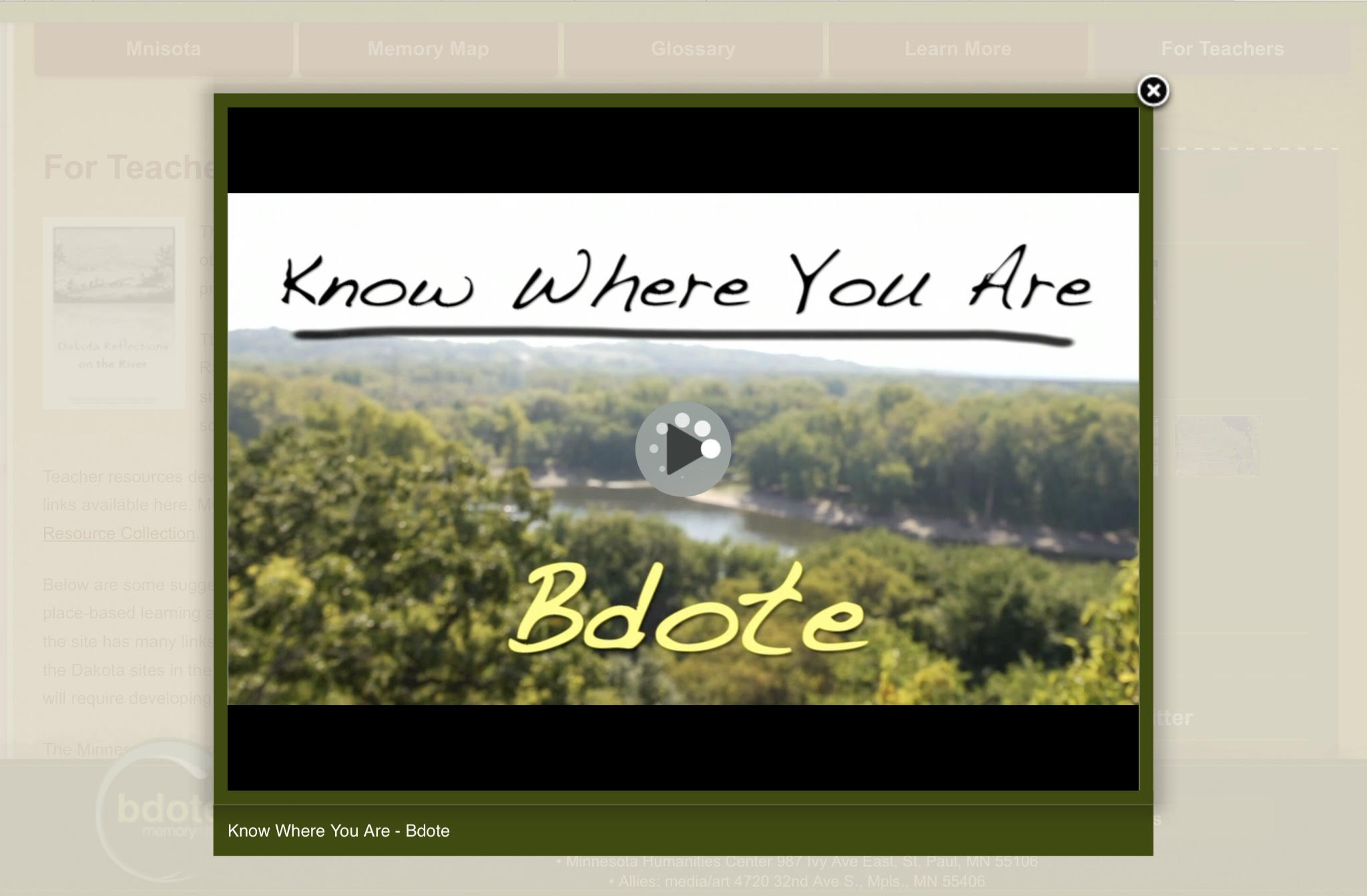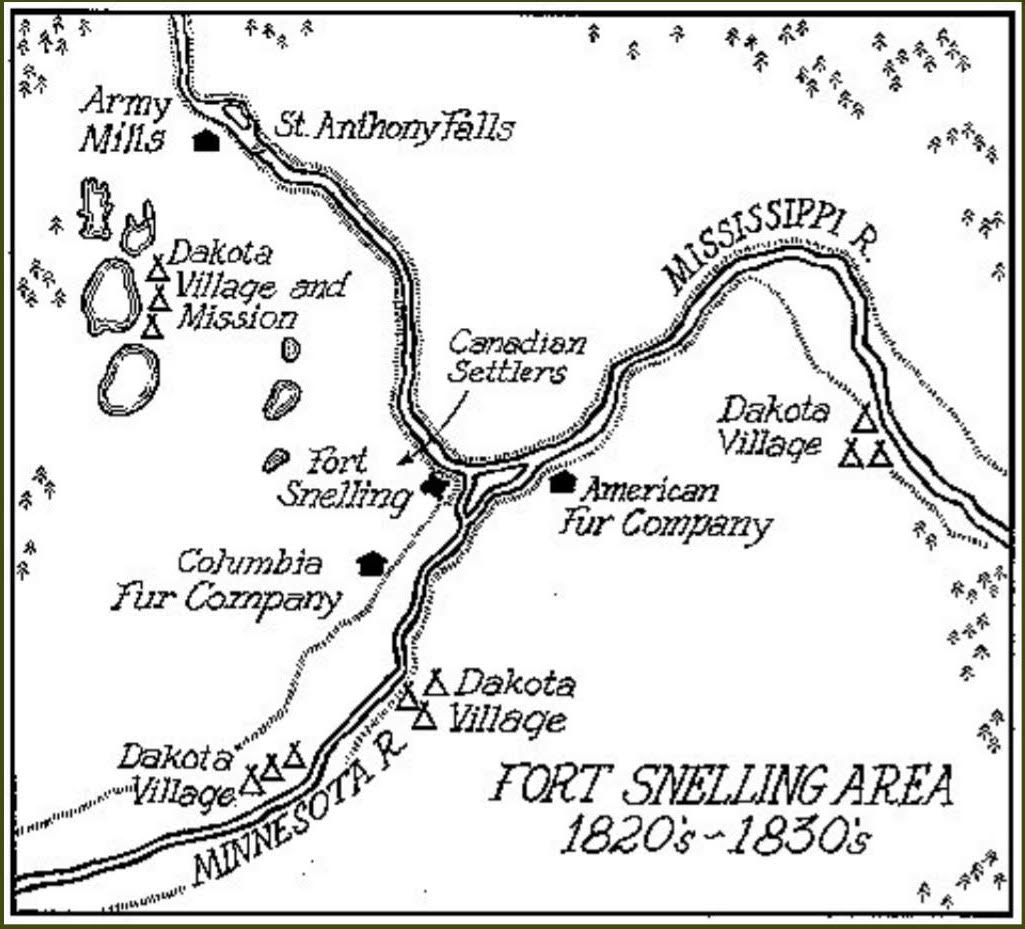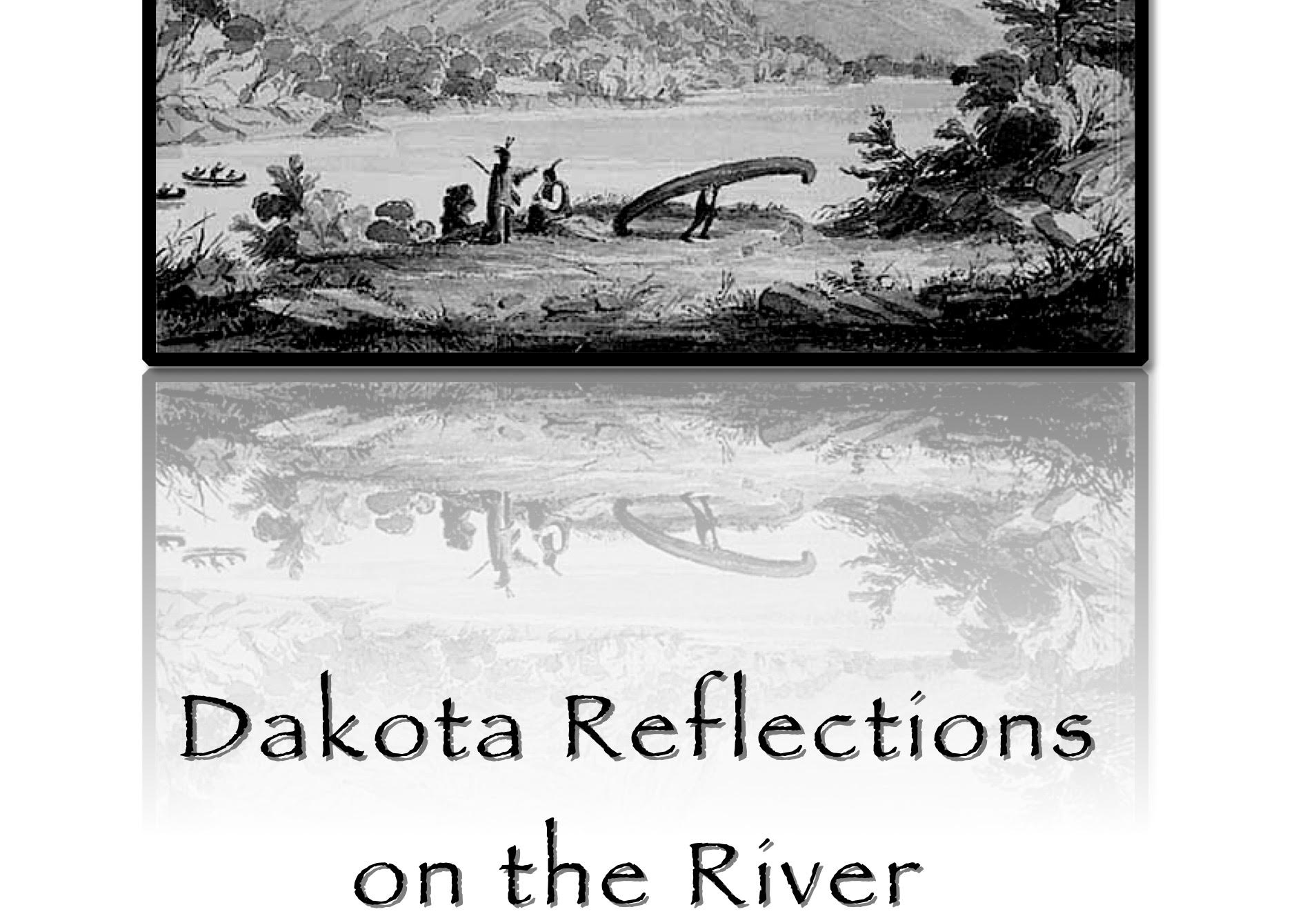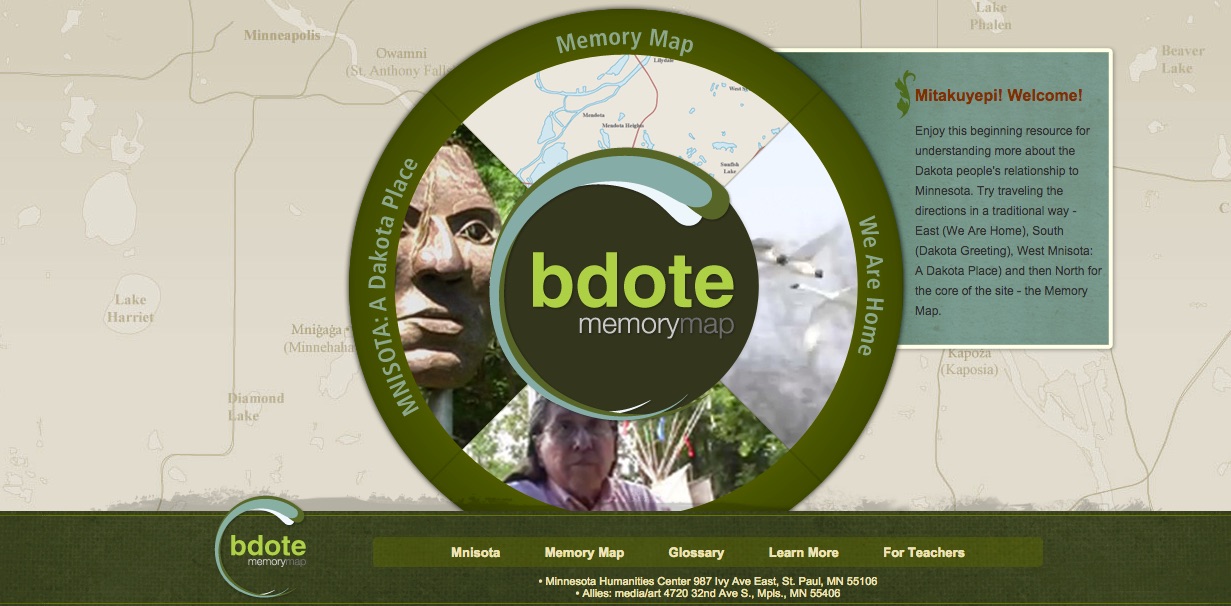The Bdote Memory Map
Abstract
The Bdote Memory Map remaps Minnesota, particularly the Twin Cities area, from a Native American—specifically Dakota—point of view. It provides counter-narratives to Euro American historical markers, then exceeds that task by including documentation of elders’ gatherings, interviews with a wide range of Native artists and experts from many Indigenous nations, multimedia pieces made by Native students, reflection prompts for visitors, and archival photos and paintings demonstrating early and ongoing Dakota presence.The Bdote Memory Map remaps Minnesota, particularly the Twin Cities area, from a Native American — specifically Dakota — point of view. It provides counter-narratives to Euro American historical markers, then exceeds that task by including documentation of elders’ gatherings, interviews with a wide range of Native artists and experts from many Indigenous nations, multimedia pieces made by Native students, reflection prompts for visitors, and archival photos and paintings demonstrating early and ongoing Dakota presence.
Mona Smith, a Sisseton-Wahpeton Dakota multimedia artist and educator, based the Map on her earlier multimedia installation City Indians with Allies; media/art. In conjunction with the Minnesota Humanities Center, the beautifully designed The Bdote Memory Map website greets visitors with a wheel, divided into four directions, similar to the traditional Dakota medicine wheel. The directions take visitors through Dakota language greetings, stories of the Bdote—the confluence of the Minnesota and Mississippi rivers—as the site of Dakota “genesis and genocide,” a history full of resilience despite the many people who died in winter internment camps and in the execution of the Dakota 38, the largest mass execution in US history, and documentation of contemporary Dakota presence, before reaching the core of the site, the Map, where an ever-growing collection of new videos and historical documents attach to key locations. The Map invites virtual visitors into relationship with the land, while also enriching physical visits. Meditative questions pair with visual and audio landscapes, while student-made video essays remind visitors that urban landscapes bear Native presence too. A mobile Map allows physical visitors to hear multiple perspectives on Fort Snelling’s concentration camp area as they walk.

Beyond the wheel and map, the site provides several tabs along its edge: a general overview at Mnisota; a Glossary of Dakota words transliterated and spoken in audio files; a Learn More page with links to many resources about the area, and US-Indigenous relations; and a richly detailed For Teachers page containing a downloadable book of writings about the river, video tours, teaching guides on “Absent Narratives” from the Minnesota Humanities Center, links to “Background information online about Indigenous people,” and suggestions for incorporating maps and “Using PLACE as a lens in the classroom.” The For Teachers page provides one of several opportunities for audience members to share their experiences, as do the Map’s Facebook page and Flickr site.

Not only does the Map incorporate participation at its main site, its work extends throughout a network of partner projects, including Smith’s multimedia installations at the Minnesota History Center and on the riverfront, a “Telling River Stories” video project developed with the River Life project of the Institute on the Environment at the University of Minnesota, and group “Bdote Field Trip” through the Minnesota Humanities Center. The collaborative growth of these efforts reflects their recently changed Twitter name, now “Bdote Partnership.” There and on Facebook, @bdotememorymap shares and retweets news about historic sites, ecological efforts, Water Protectors, treaties, and more. The ongoing iterative growth of the Bdote Partnership testifies to its necessity and vibrancy, a true confluence of cultures and of possibilities.


